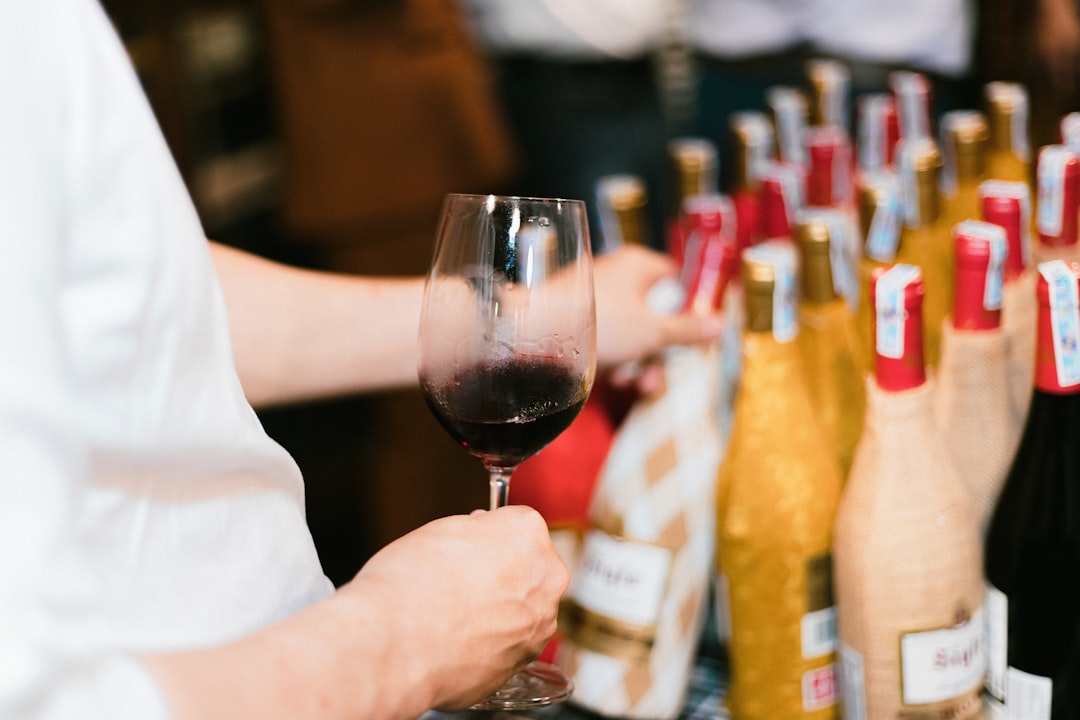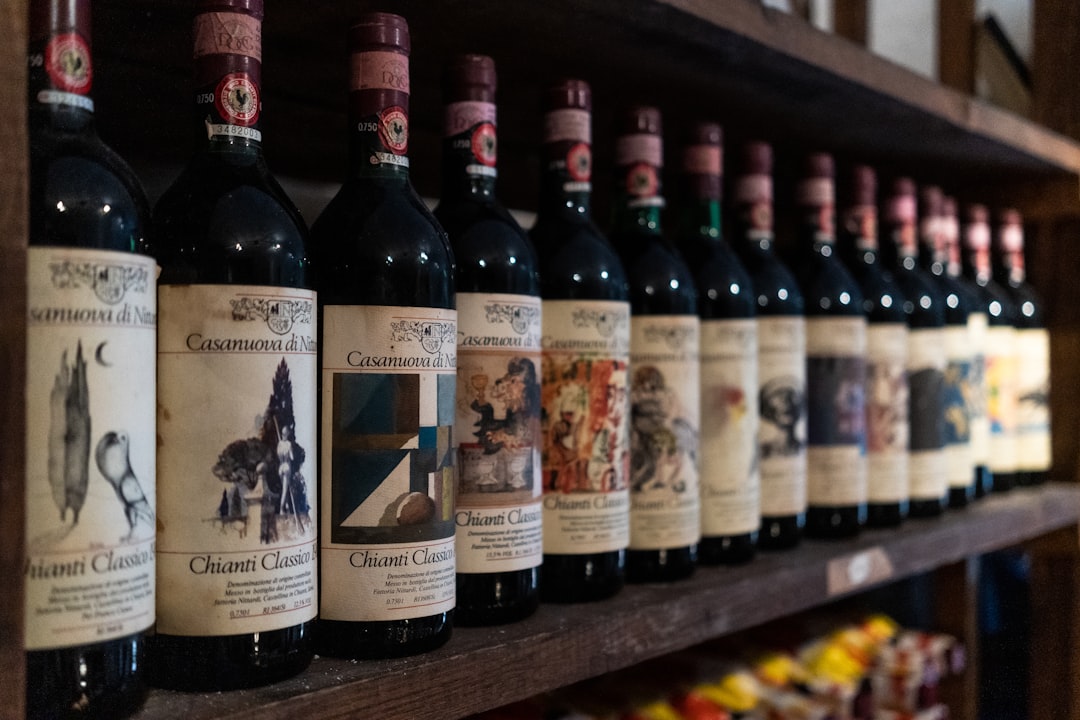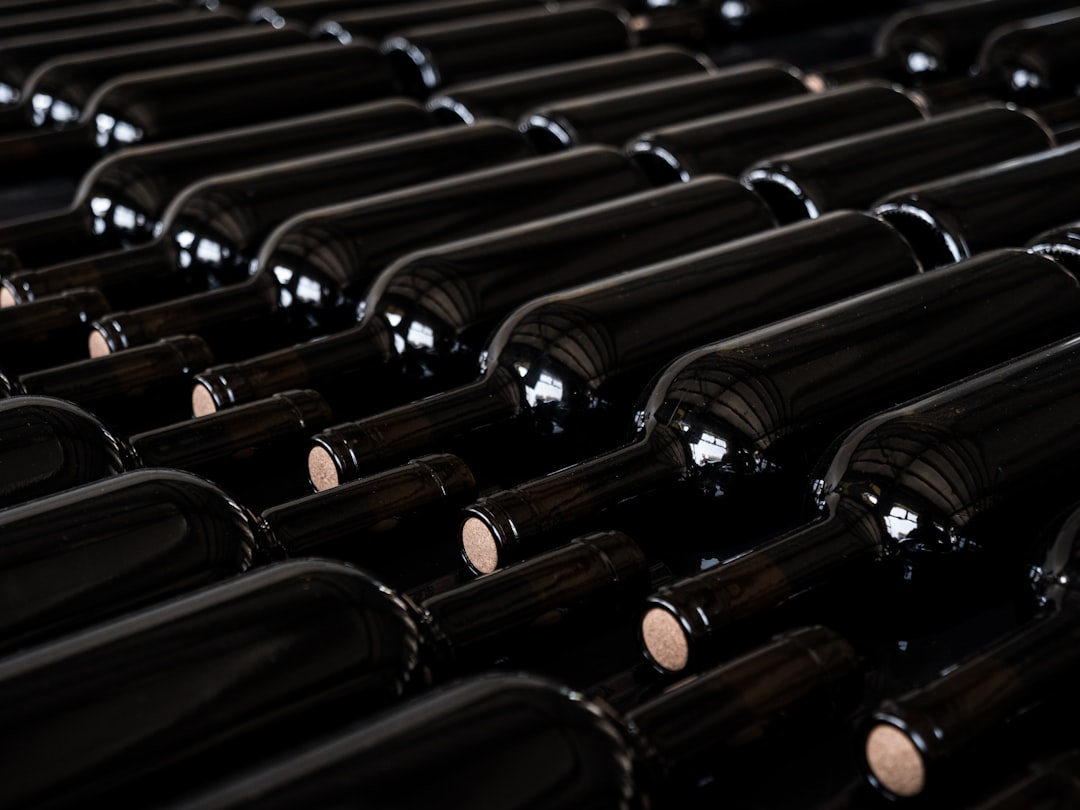

Engage prospects with a scan and streamline customer engagement with FREE QR code marketing tools by Sona – no strings attached!
Create a Free QR CodeFree consultation

No commitment

Engage prospects with a scan and streamline customer engagement with FREE QR code marketing tools by Sona – no strings attached!
Create a Free QR CodeFree consultation

No commitment
The wine industry is in the midst of a digital renaissance, but many wineries still struggle to capture and quantify customer engagement at the vital moment when a consumer first encounters a bottle on the shelf or in hand at a tasting. Traditional marketing tools such as print brochures, paper tasting menus, and static packaging limit the ability to drive immediate action and measure outcomes. Marketers, growth leaders, and winery executives face a core challenge: transforming each physical bottle, label, and event into a powerful marketing asset and data-rich customer journey.
QR codes for wine are emerging as an essential bridge between offline and online engagement for wineries, enabling a seamless, data-driven approach to customer experience. These tools allow wineries to connect physical packaging and events to digital content, tasting notes, virtual tours, event sign-ups, and personalized offers. In an era when many wine buyers explore products without immediately committing or submitting forms, relying on traditional tools can leave valuable visitor intent undiscovered.
By intentionally incorporating QR codes into winery packaging and broader campaigns, wineries open new paths to trackable engagement, ensure high-intent prospects are never anonymous, boost digital conversions, and build segmented audiences for timely retargeting. This creates the opportunity for every touchpoint, from bottle scan to tasting room visit, to drive business outcomes and foster lasting customer relationships.

Wineries often encounter missed opportunities when visitors leave without engaging or signing up, and manual signups or brochures do not inspire action. Modernizing these processes means meeting customers at the right moment and supporting digital engagement. QR codes replace outdated workflows by instantly directing wine lovers to mobile pages, special offers, event sign-ups, or feedback forms, minimizing friction and capturing intent while it is fresh. For foundational strategy, explore qr codes in marketing.
Packaging is the most persistent and scalable marketing surface a winery owns. When a bottle is scanned at retail or after unboxing an online order, that moment can become the start of a digital relationship. Thoughtfully designed QR-driven experiences guide consumers from curiosity to concrete action, such as saving tasting notes, joining a club, or reserving a tasting, all with measurable results.
Adopting these steps ensures every encounter, from tasting bar to shelf, becomes a measurable, data-driven marketing event. Over time, your packaging shifts from a static label to a digital concierge that educates, inspires, and converts.

The wine sector faces persistent gaps between physical experience and digital follow-up, especially when potential customers explore without initiating direct contact. Many high-value opportunities are missed because engagement remains untracked when it happens offline, whether a bottle is picked up in retail or a visitor attends a tasting event. QR codes provide a direct link to immediate action with measurable results.
These tools also reduce the time and cost associated with printing and updating brochures, maps, and tasting menus. Use product packaging with dynamic QR codes to change destinations as vintages sell out or new releases arrive, helping marketing teams keep content fresh without reprinting labels or signage.
As consumers demand personalized experiences, QR codes help wineries meet buyers where they are and continue the conversation after the first sip. The result is a connected customer journey that respects attention, reduces friction, and proves marketing impact. For deeper context, see Sona’s blog post titled The importance of accurate revenue attribution.

Choosing the right QR format is crucial because each supports specific business objectives and operational needs. For wineries, a mix of web links, forms, and connectivity codes covers most consumer interactions across packaging, retail displays, and events. The goal is to meet the consumer’s intent with the simplest possible action.
Dynamic QR codes are particularly powerful because they allow you to change the destination after printing. This is ideal for bottles and collateral that live for months, sometimes years, in cellars or retail. Static codes still work for permanent content like a general brand site or a PDF, but they lack analytics and flexibility.
Centralized platforms like Sona QR make it easy to deploy and manage these formats in one place. You can update destinations, tag audiences, and see performance across campaigns without juggling multiple tools.

Many wineries lack insight into which physical touchpoints spark genuine interest that never gets captured. The key is to prioritize high-traffic surfaces and moments when the consumer is already engaged. Packaging is a foundational asset, but there are dozens of other places where a simple scan can turn attention into action.
Start by auditing your physical footprint. Map where customers encounter your brand across retail, on-premise, direct-to-consumer shipments, and events. Then add scannable invitations that align with each moment’s intent, such as learning more, joining, buying, or sharing.
Targeting these areas improves ROI, multiplies engagement signals, and feeds higher-quality data back into your marketing stack. Over time, you will learn which placements produce the best results and can scale accordingly.
Many wineries experience high interest that does not convert because follow-up is inconsistent or the next step is unclear. QR codes transform interest into action by showing the right offer at the right time, linked to measurable outcomes. Start with a handful of use cases that align to your goals, then expand as you learn.
Consider which actions you most want consumers to take. If your priority is club growth, emphasize sign-up flows with benefits. If you want to boost event attendance, focus on RSVP codes and calendar saves. If product education is key, make videos and tasting notes front and center.
These use cases turn missed connections into leads and form the foundation for automated, personalized marketing. Over time, you can measure outcomes like increased event registrations, higher club conversion rates, and stronger repeat purchase behavior.
One major challenge for wineries is the inability to track or segment anonymous traffic across the physical journey. Modern QR code campaigns capture intent and context in the moment, making it possible to create precise audience segments for retargeting via email, SMS, and paid media. The more specific your segmentation strategy, the more relevant your follow-up can be. For execution tactics, see Sona’s Playbook titled Intent-driven retargeting.
Plan your segments around the customer lifecycle. A scan on a bottle in retail signals early consideration, a scan on a shipping insert signals post-purchase delight, and a scan at an event signals high intent and community engagement. Use these signals to tailor messages that feel appropriate to each stage.
This approach supports better personalization than generic web analytics because it is rooted in physical context and intent. As a result, your campaigns feel timely, relevant, and helpful.
Disjointed channels create blind spots. QR codes connect the dots between physical media and your digital ecosystem so you can attribute outcomes, respond in real time, and scale what works. The impact grows when you integrate QR codes across multiple touchpoints, not just on a single label or flyer.
Treat QR codes as the gateway to your complete marketing engine. The scan triggers a journey that can include personalized landing pages, automated follow-up via email or SMS, and retargeting across ads. A centralized dashboard, such as Sona QR, lets you monitor performance across all channels and maintain consistent messaging.
When every channel is connected, your winery builds a cohesive experience that carries a buyer from awareness through purchase and membership. The data you capture fuels smarter creative, better timing, and stronger offers.
Execution issues such as failed follow-up and untracked interest can be solved with a disciplined QR code program. A checklist brings rigor to planning, deployment, and optimization so every scan adds value and informs your next move. Dedicate owners to each step and establish a cadence for reviewing results and iterating.
Below is a winery-specific framework that you can adapt to your size, distribution footprint, and marketing stack. It covers use case selection, code creation, creative design, deployment across surfaces, and analytics.
Define what you want the scan to accomplish and select the most impactful starting point. Common winery goals include event RSVPs, club sign-ups, tasting reservations, review collection, and educational content engagement. Align each use case with a clear business outcome and a simple path to action.
Choose static for fixed destinations with no tracking needs, and dynamic for editable destinations, analytics, and retargeting. Most packaging and campaign codes should be dynamic for flexibility and measurement.
A clear visual frame, adequate size, and a high-contrast pattern ensure reliable scanning. Include a concise, benefit-led CTA adjacent to the code so consumers know what they will get from scanning.
Place your codes where attention is already won, then match the code’s CTA to the environment. For example, use “Scan for tasting notes” on labels, “Scan to RSVP” at events, and “Scan to join the club” on shipping inserts.
Monitor performance in real time to iterate quickly. A platform like Sona QR lets you track scans by time, location, and device, then push data to your CRM and ad platforms. For creative testing tips, see how to integrate QR codes into campaigns.
By following this checklist, you build a repeatable process that captures demand at the source and converts it into measurable outcomes. Start with one or two use cases, prove value, and scale to new placements and campaigns as you learn. Start creating QR codes for free.
Connecting marketing to revenue is difficult without the right analytics. Advanced QR tracking brings full-funnel visibility from the first scan to the eventual purchase or club enrollment. When your codes are dynamic and your destinations are tagged, you can attribute results by product, placement, and message. For measurement models, read Sona’s blog post titled Single vs Multi-Touch Attribution Models.
Use analytics to inform creative, offer strategy, and inventory decisions. If certain varietals drive higher scan-to-purchase rates, allocate more shelf signage or invest in expanded content for those bottles. If a region underperforms, test alternative CTAs or promotions.
When scan data is unified with your broader buyer journey, it becomes a strategic asset. You can prove which offline placements drive outcomes, minimize wasted spend, and scale the tactics that consistently create revenue.
Missed engagement signals often translate into lost upsell or cross-sell opportunities. The following practices help you capture more value from every scan by improving relevance, measurement, and follow-up. Prioritize the ideas that align with your most common media and your marketing stack.
Think of QR engagement as the starting point, not the finish line. Use automation to make sure each scan triggers a next step that fits the buyer’s stage and interest, such as reminders for upcoming events, tailored discounts, or educational content.
Creative deployments add novelty and encourage participation. Examples include QR codes on cork coasters that unlock a staff pick of the week, or limited-release bottle collars that reveal a hidden tasting video and early access to pre-orders.

Wineries across regions are putting QR codes to work in smart, measurable ways. The most successful programs align the offer with the moment and make it effortless to take action. Results compound when codes are deployed across packaging, tasting rooms, and events with consistent messaging and follow-up.
While outcomes vary by channel and creative, benchmarks show that strong, benefits-first calls to action significantly improve scan rates. Simple changes like “Scan for pairing advice” or “Scan for member pricing” can drive meaningful lifts in engagement and conversion.
These examples illustrate how QR codes bridge offline and online experiences to produce measurable results. The key is aligning creative, placement, and the follow-up journey with clear business goals.
Success with QR codes depends on consistent execution and attention to the customer experience. Small details like placement, contrast, and CTA clarity can dramatically affect scan rates. A disciplined approach to testing and iteration separates high-performing deployments from forgettable ones.
Equally important is end-to-end integration. If your codes are not connected to your CRM and marketing tools, you lose the ability to segment, retarget, and attribute. Plan your data flows in advance so insights do not get lost. For methodology on tying marketing to pipeline, see Sona’s blog post titled Measuring marketing’s influence on the sales pipeline.
Avoid pitfalls such as burying codes near a barcode, using vague CTAs, or linking to slow-loading pages. Every broken experience or unclear message erodes trust and reduces future engagement.
QR codes are now a pivotal tool for modern wineries, transforming every bottle, shelf, and tasting experience into a measurable, interactive marketing asset. By combining intentional QR deployment with analytics and segmentation, wineries unlock instant digital engagement at scale, ensure high-value prospects and anonymous visitors are never left behind, and drive quantifiable results from packaging and physical experiences. This approach bridges traditional marketing gaps and sets wineries up to nurture customer relationships, maximize offline touchpoints, and lead the industry in digital innovation and growth.
QR codes have transformed wineries from traditional packaging to interactive, data-driven marketing tools. Whether it’s acquiring new customers through engaging storytelling, enhancing tasting experiences, or providing instant access to vineyard information, QR codes turn every bottle into a powerful connection point that deepens customer loyalty and drives sales. Imagine knowing exactly which labels spark the most interest and being able to update your campaigns instantly—without the cost of reprinting.
With Sona QR, wineries can create dynamic, trackable QR codes in seconds, measure engagement in real time, and connect each scan directly to revenue outcomes. From exclusive offers to virtual tours and pairing suggestions, Sona QR empowers wineries to deliver personalized experiences that convert casual sippers into brand advocates.
Start for free with Sona QR today and transform your packaging into an interactive, revenue-generating asset that brings your winery’s story to life with every scan.
QR codes can be placed on wine bottles, tasting menus, neck tags, event signage, and retail displays to connect physical experiences to digital content such as tasting notes, virtual tours, event sign-ups, and personalized offers, enabling measurable customer engagement.
QR codes on wine labels turn static packaging into interactive marketing assets that educate consumers, capture high-intent prospects, boost digital conversions, reduce printing costs, allow real-time content updates, and provide trackable engagement data.
Wineries use QR codes linked to mobile-optimized landing pages, forms, videos, and support tools to create seamless digital journeys from physical touchpoints, enabling personalized offers, event RSVPs, club sign-ups, and automated follow-up integrated with CRM and ad platforms.
Scanning a QR code on a wine bottle can provide access to tasting notes, food pairing advice, winemaker videos, vineyard stories, limited-release alerts, club enrollment, event registration, and post-purchase engagement like reviews and referral offers.
By placing QR codes on high-traffic surfaces such as bottles, menus, event signage, and shipping inserts, wineries capture visitor intent at the moment of engagement, convert scans into club sign-ups, RSVPs, and feedback submissions, and build segmented audiences for targeted retargeting campaigns.
Use Sona QR's trackable codes to improve customer acquisition and engagement today.
Create Your FREE Trackable QR Code in SecondsJoin results-focused teams combining Sona Platform automation with advanced Google Ads strategies to scale lead generation

Connect your existing CRM

Free Account Enrichment

No setup fees
No commitment required

Free consultation

Get a custom Google Ads roadmap for your business






Launch campaigns that generate qualified leads in 30 days or less.
